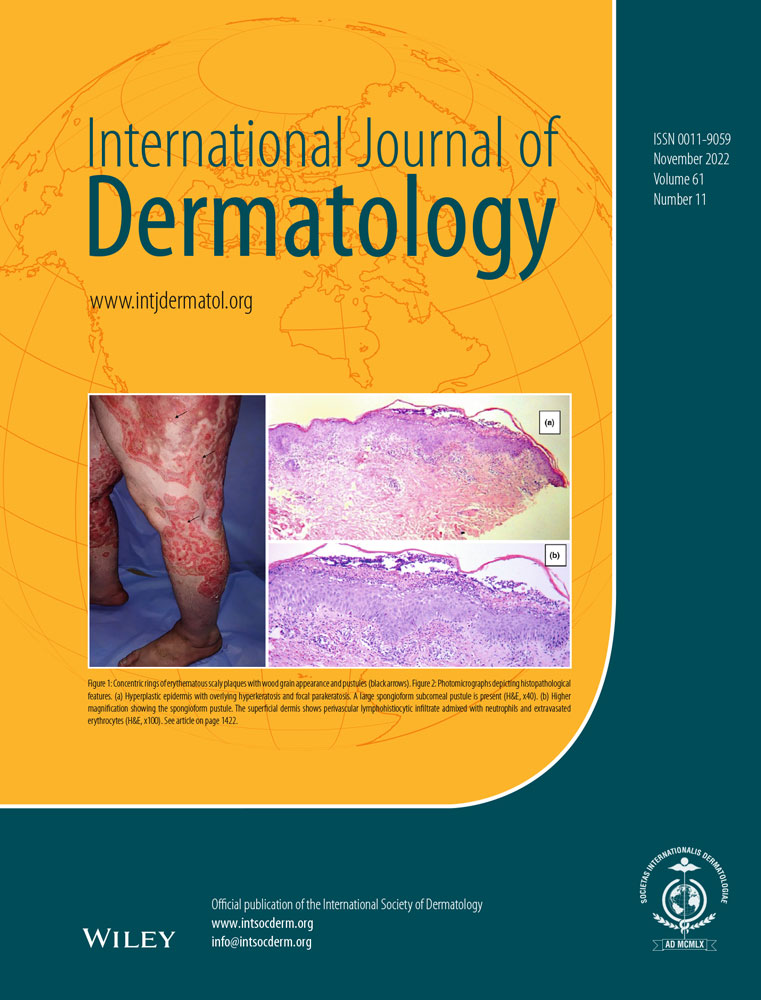Assessment of prostaglandin F2-alpha (PGF2α) in lesional and nonlesional skin of vitiligo patients
ClinicalTrials.gov registration ID: NCT03755830 (25/11/2018).
Conflict of interest: None declared.
Funding source: None.
Abstract
Background
F2-isoprostane is one of the members of biologically active prostaglandins. It is considered a reliable marker of oxidative stress. This study aimed at investigating and studying the hypothesis of the possible role of prostaglandin F2-alpha (PGF2α) in the pathogenesis of vitiligo and to know if there is a possibility of using it in therapy.
Methods
This case–control study involved 30 patients with nonsegmental vitiligo and 30 healthy sex- and age-matched controls over a period of 7 months. Skin biopsies were taken from lesional and nonlesional vitiliginous skin of patients and from normal skin of controls for measurement of PGF2α in tissue by ELISA.
Results
The tissue levels of PGF2α in vitiligo patients were significantly higher in both lesional and nonlesional skin than in healthy controls (P < 0.001). The tissue levels of PGF2α in lesional skin were significantly higher than in nonlesional skin (P < 0.001).
Conclusion
Based on the fact that PGF2α is a reliable biomarker of oxidative stress, in addition to our results that revealed higher tissue levels of PGF2α in vitiliginous skin than in healthy skin, we can conclude that PGF2α may be incriminated in the pathogenesis of vitiligo. This finding could help in the treatment of this disease by using anti-PGF2α drugs.




